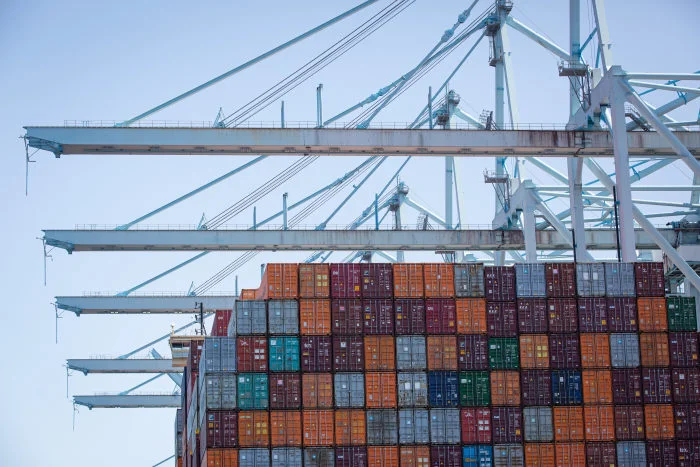
Trump’s Tariff Turmoil Sparks Fears of Default and Economic Stagflation
Financial markets have been thrown into a stormy period as former President Donald Trump’s shifting stance on tariffs—and the resulting economic uncertainty—has raised the specter of a U.S. default and potential stagflation. The recent market gyrations underscore a growing concern: America’s economic policies are approaching dangerous new territory, with global repercussions.
On Wednesday, headlines proclaimed, “Trump backs down on tariffs, again. And it doesn’t look strategic,” punctuating a wild week in which equities whipsawed, interest rates surged, and business activity contracted. The economic turmoil was palpable, and so was the political fallout. According to prediction markets, the odds of a U.S. default ticked up to 6%, an unsettling prospect for the world’s most important economy.
Former Treasury Secretary Larry Summers did not mince words, stating that a recession seemed “imminent.” He added, “We are being treated by global financial markets like a problematic emerging market,” highlighting the erosion of confidence among international investors. Meanwhile, the Federal Reserve Bank of Atlanta projected negative 2.4% first-quarter GDP growth, intensifying fears that tax revenues will fall short, making the government’s fight over the debt ceiling even more urgent.
Donald Trump seems acutely aware of this economic knife-edge. In a series of remarks and social media posts, he has oscillated between pushing Republicans to block any lift of the U.S. debt ceiling—"if they don't give you massive cuts, you're going to have to do a default"—and later proposing to scrap the ceiling entirely, especially once Republicans secured control of Congress. The back-and-forth showcases not only the political maneuvering but also the uncertainty gripping lawmakers and markets alike. “They should be blamed for this potential disaster, not the Republicans!” Trump declared, seeking to turn the looming crisis to his party’s advantage.
Yet, the underlying economic data presents a more sobering reality. According to a new economic outlook, the effective U.S. tariff rate could soar above 25%, a level not seen since the early 20th century. Even if negotiations lower it to just under 20%—still four times pre-tariff rates—the drag on growth will be severe. 2025 U.S. GDP growth could drop below 1%, while core inflation might climb to nearly 4% year over year, raising alarms about stagflation—a toxic mix of stagnation and inflation not seen since the 1970s.
The Federal Reserve faces a daunting dilemma: with growth slowing and prices rising, its dual mandate will be tested. Lowering rates might prove difficult against an inflationary backdrop, but ongoing labor market weakening could force their hand. Outside the U.S., softer global demand offers little comfort, as it may suppress international growth without providing relief from inflationary pressures.
Meanwhile, investors are left trying to decipher the erratic signals from policymakers. James Carville, former political adviser to Bill Clinton, once quipped, “I want to come back as the bond market. You can intimidate everybody.” Recent events suggest that, more than ever, the bond market is calling the shots—leaving Washington and Wall Street on edge.
The coming months will determine whether the U.S. staves off disaster or stumbles further into economic peril. Will political brinkmanship yield to compromise, or will new rounds of fiscal and trade turbulence deepen the malaise? Readers, how do you view these developments? Join the conversation and share your perspectives below.
Related issues news
Will tariffs lead to a recession?
Taxing all imports will lead to greater costs for U.S. businesses, which will then raise prices for U.S. consumers, and may well bring the U.S. into a recession, a sustained economic decline.
What are economists saying about tariffs?
Most mainstream economists think the kind of sweeping tariffs imposed by Mr. Trump on nearly all U.S. imports act as a tax on businesses and consumers. Such levies raise the cost of many essential items, leading to higher prices for American households; depress economic growth; and could even trigger a recession.
What is anti-Trump?
The Never Trump movement (also called the #nevertrump, Stop Trump, anti-Trump, or Dump Trump movement) is a conservative political movement that opposes Trumpism and U.S. president Donald Trump, and in general supports a return to a more rules-based internationalist, norm-following, ideologically conservative-oriented ...
How can tariffs cause a recession?
Should the tariffs remain in place for an extended period, they will likely raise costs and uncertainty for businesses, which could reduce their willingness to hire, invest in new equipment or software, or expand into new markets. Americans could cut back on their spending in the face of higher prices.